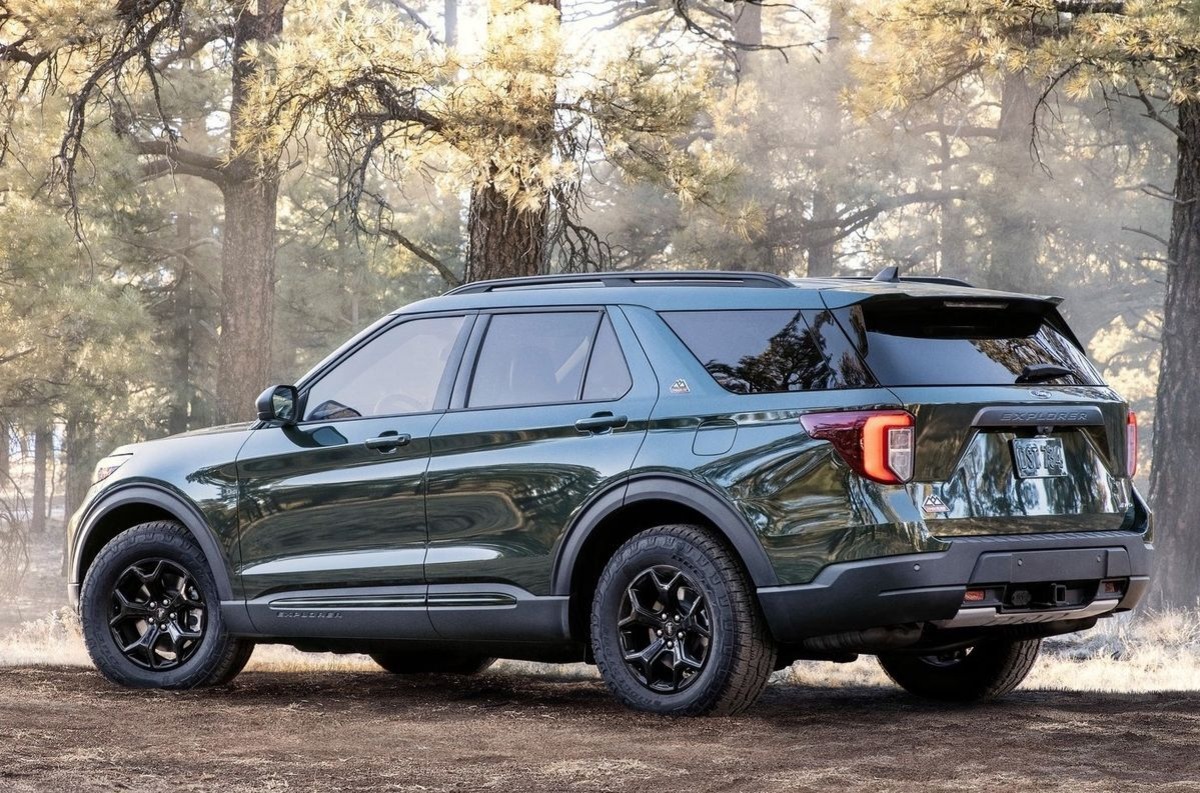Curb-side drop-offs are a common part of daily life—whether you’re dropping off your kids at school, helping a friend out in a busy city, or delivering items without needing to park. In these scenarios, the importance of a well-designed rearview camera system becomes evident.
Traditional rearview mirrors and backup cameras offer a narrow, sometimes distorted view of what’s directly behind the vehicle.
But for precise curb-side positioning, drivers need more than just a rear snapshot—they need camera angles that provide clarity on wheel proximity, curb alignment, pedestrian traffic, and even door clearance.
Modern vehicles have evolved with a suite of advanced camera systems, including wide-angle, top-down (bird’s-eye), side-mirror, and even curb-view cameras.
These features aren’t just gimmicks—they’re highly functional tools that reduce the risk of scratching rims, hitting obstacles, or endangering pedestrians.
Automakers have recognized this need, particularly for parents and urban dwellers who frequently navigate tight school lanes or downtown curbs.
In this article, we examine 10 standout vehicles that offer some of the most effective rearview camera angles for curb-side drop-offs. We’ll explore how these systems work, what sets them apart, and how they enhance both safety and convenience.
Each entry highlights thoughtful design that addresses the unique challenges of urban and suburban drop-off scenarios.
This lineup covers a broad spectrum of vehicles suited for precise and efficient curb-side maneuvering, from minivans to crossovers to sedans equipped with advanced infotainment systems.
Whether you’re a rideshare driver aiming for precision, a parent focused on safety, or simply someone tired of second-guessing curb distance, the right camera angle can make all the difference. Let’s take a closer look at these game-changing systems.
Also Read: 10 Cars That Fit Rear-Facing Car Seats Without Moving the Front Row Forward
1. Honda Odyssey
The Honda Odyssey stands as a prime example of how thoughtful camera technology can make curb-side drop-offs more efficient and less stressful.
As one of the most family-focused minivans on the market, the Odyssey comes standard with a multi-angle rearview camera that provides three views: normal, wide, and top-down. It’s the top-down (or bird’s-eye) view that truly shines in curb-side scenarios.
This camera angle offers a straight-down look at the rear bumper area, which is especially helpful when aligning the vehicle parallel to a curb. You can see how close your wheels are to the edge, minimizing the risk of scraping or overhanging the curb.
Additionally, this feature helps drivers ensure that passenger doors will have enough clearance when opening—an often overlooked detail that becomes critical in narrow school or city zones.
Honda’s execution is notable for its clarity and responsiveness. The camera feed updates quickly, without lag, and the on-screen guidelines adjust in real-time with the steering wheel to show your projected path.
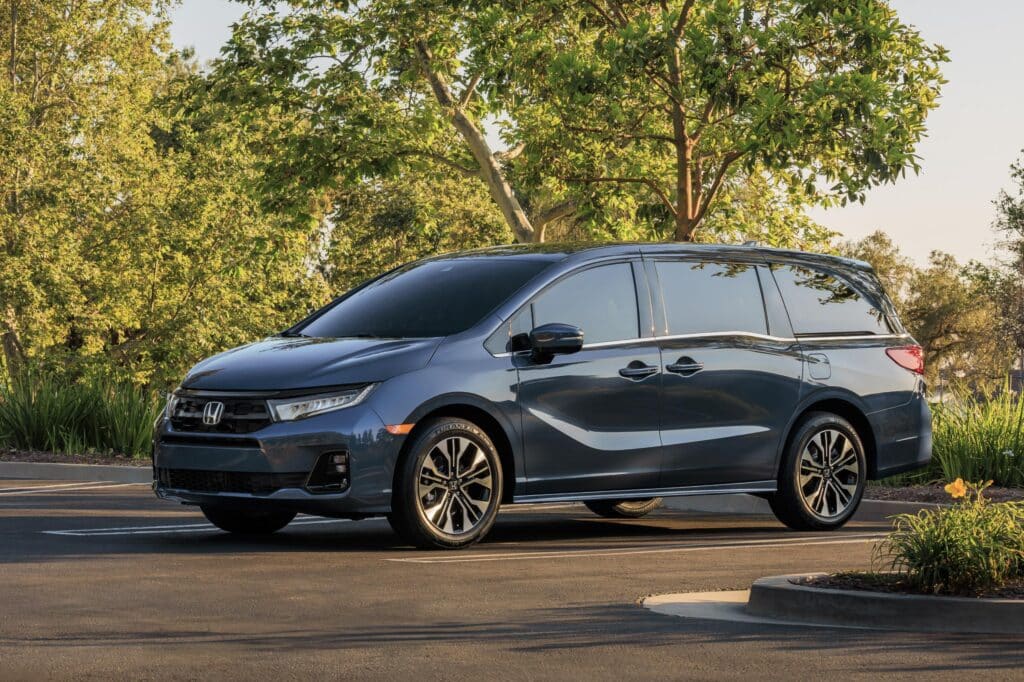
This allows the driver to pivot precisely into tight drop-off spots without needing a spotter or second-guessing the angle.
Parents especially benefit from this feature. Whether dropping off children at school or navigating a packed daycare parking lot, the Odyssey’s camera makes it easy to maneuver into position without needing to reverse and realign multiple times.
Paired with front and side sensors, the rearview display creates a nearly 360-degree situational awareness.
Though the Odyssey lacks a full 360-degree surround-view system in its base trims, its multi-angle rearview camera still delivers exceptional utility at a lower price point.
For families who don’t want to splurge on premium trims but still want safety and convenience, the Odyssey hits a sweet spot.
If you’re looking for a camera system that brings high practicality to everyday curb-side needs, the Odyssey sets the standard in its class.
2. BMW X5
BMW’s X5 is a luxury midsize SUV, and it’s equipped with a camera system that feels like it belongs in a high-tech command center.
Among its most useful features for curb-side drop-offs is the Surround View with Curb View Camera—a suite that includes front, rear, and side cameras working together to deliver crystal-clear images on the central infotainment display.
The Curb View Camera, in particular, is designed to protect the vehicle’s wheels and body from accidental curb contact. Positioned within the front bumper and mirrors, the system offers side-angle visuals that are perfect for parallel parking or precise curb alignment.
When the X5 is in reverse or maneuvering at low speeds, these side cameras activate and display on-screen overlays showing exactly where the front and rear tires will go.
The top-down composite view adds another layer of confidence by displaying a virtual outline of the car and its surroundings.
Drivers can also toggle between multiple angles—front cross-view, side views, and rear wide-angle—depending on their specific needs. This flexibility makes it easy to line up right next to a sidewalk, even on a busy street.
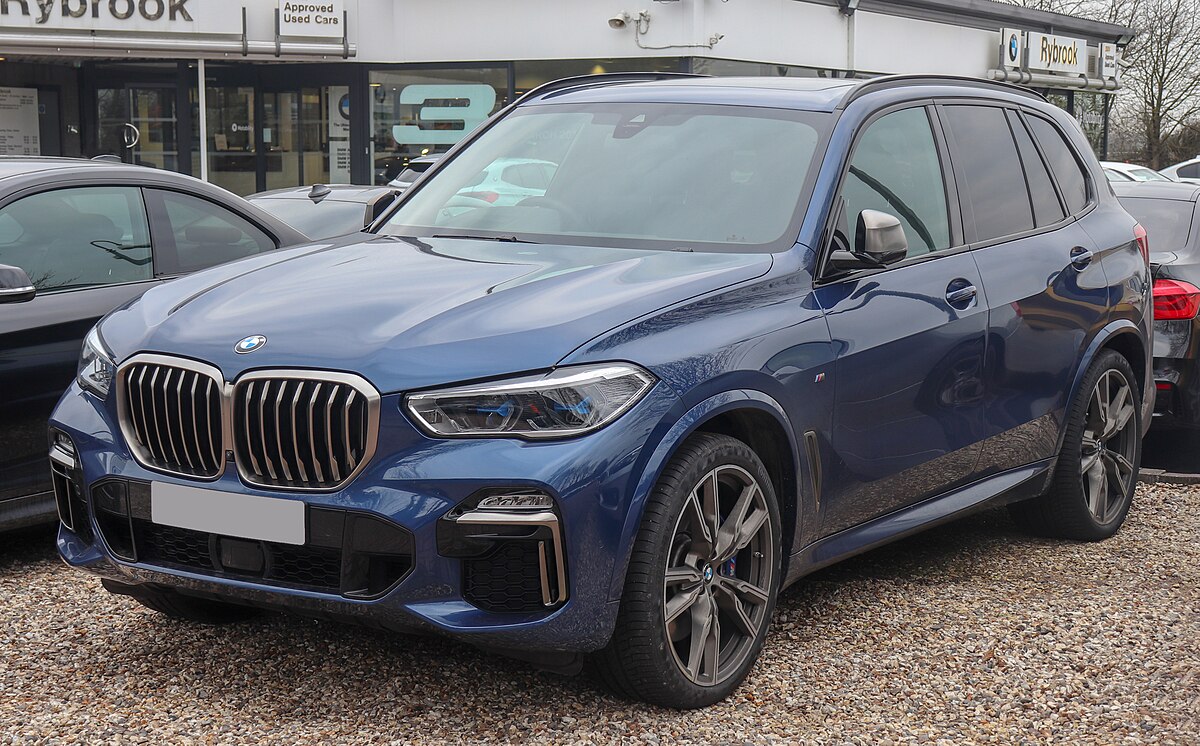
For drop-offs, it means passengers can safely exit without stepping into traffic or navigating an awkward gap between the vehicle and the curb.
BMW’s camera resolution is also worth mentioning. The display is HD-quality, which makes it easier to spot small but important details like curbs, sewer grates, or debris near the drop-off point. Add in dynamic parking lines and proximity sensors, and the X5 essentially guides you into perfect alignment every time.
Beyond the tech, the X5’s large screen and intuitive interface make accessing and interpreting these views a breeze. Even drivers new to advanced camera systems can quickly learn to rely on them for better drop-off accuracy.
Luxury meets practicality in the BMW X5, making it a top choice for those who want premium driving assistance in urban settings.
3. Toyota Highlander
The Toyota Highlander is a popular family-oriented SUV that features one of the most versatile surround-view camera systems in its segment.
Branded as the Bird’s Eye View Camera with Perimeter Scan, this system is a major asset when it comes to curb-side drop-offs.
The technology stitches together feeds from multiple cameras—mounted in the front grille, side mirrors, and rear bumper—to create a simulated top-down view of the vehicle.
What makes the Highlander’s system exceptional is its Perimeter Scan function, which automatically pans the camera view around the vehicle in a slow sweep.
This provides a dynamic look at the surroundings, not just a static image, and is particularly useful for spotting nearby pedestrians, bicycles, or obstacles before opening the passenger-side doors.
In practical terms, the camera feed allows for precise curb alignment by showing both the proximity of the tires to the curb and the available clearance space on the passenger side. This is ideal for families with small children, ensuring safe and accessible entry and exit.
The high-resolution screen on the center console enhances usability, and steering-linked dynamic guidelines help drivers line up accurately with minimal effort.
Another strength is how seamlessly the camera engages. The system activates automatically when the vehicle is shifted into reverse or when a slow-speed maneuver is detected. The driver can also manually activate the camera using a dash-mounted button, giving them full control regardless of the driving mode.
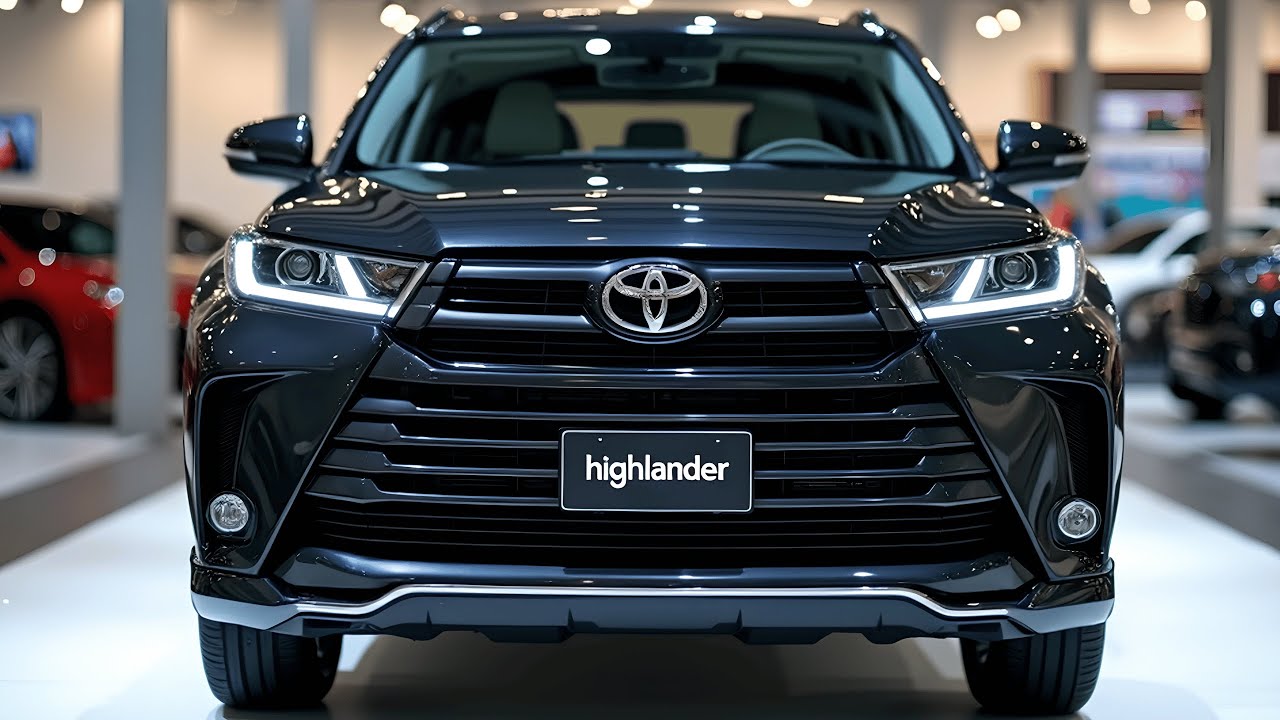
In tight urban environments or crowded school zones, this level of visibility makes a noticeable difference. It also reduces stress and the risk of rim damage when pulling close to curbs in parallel or angled drop-off zones.
For drivers who frequently navigate busy streets or drop-off lanes, the Highlander’s Bird’s Eye View system adds confidence and clarity to every maneuver.
With user-friendly controls and practical application, Toyota has given the Highlander a major advantage for those who value precision and safety during everyday curb-side activities.
4. Ford Explorer
The Ford Explorer combines rugged capability with smart technology, and one of its standout features for urban utility is its 360-Degree Camera System with a Split-View Display.
Ideal for curb-side drop-offs, this system uses multiple cameras to generate a composite aerial view of the vehicle and the immediate surroundings.
What makes it particularly effective is the ability to display different angles simultaneously—a feature not commonly found even in higher-end vehicles.
When activated, the system shows both a traditional rearview image and a bird’s-eye top-down perspective side-by-side on the large infotainment screen. This dual display is particularly useful when approaching a curb or navigating a narrow shoulder.
The driver can see how close the rear tires are to the edge while also monitoring the entire perimeter for nearby traffic, parked cars, or pedestrians.
The Explorer’s system also includes a front 180-degree split-view camera, which comes in handy when maneuvering forward into tight curb spaces or pulling away from a narrow drop-off point. The system can be toggled through the touchscreen, and dynamic parking guidelines assist in aligning the vehicle perfectly parallel to the curb.
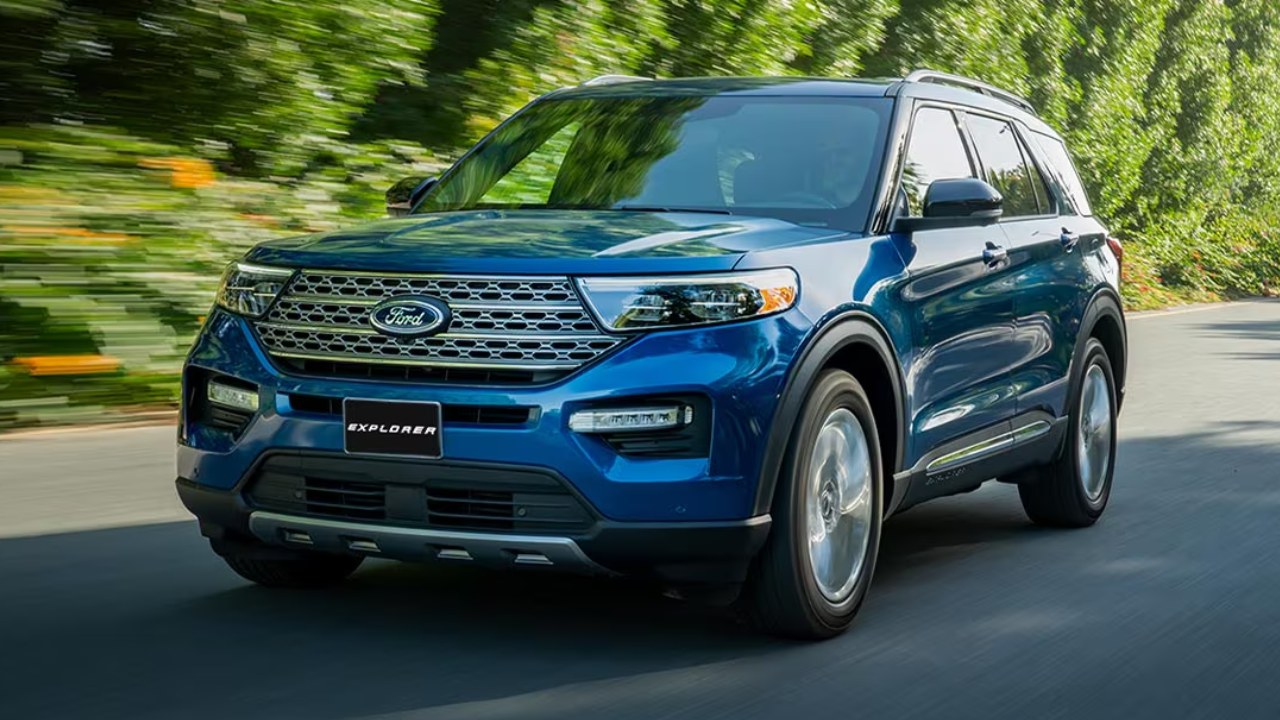
What further enhances the Explorer’s camera utility is the visibility of curb height and road texture on-screen. Thanks to its high-definition lenses and well-placed sensors, the feed gives the driver a solid sense of depth and distance, reducing the need for guesswork. This is especially beneficial when the drop-off area is irregular or slightly sloped.
In terms of use cases, the Explorer’s camera setup benefits a wide range of drivers—from parents navigating busy school pick-up lanes to professionals making quick city stops. The system’s ability to show precise wheel position next to the curb ensures smooth and safe exits for passengers.
The 360-degree camera on the Ford Explorer is more than just a parking aid—it’s a comprehensive spatial awareness tool that proves its value every time you make a drop-off along a crowded curb.
5. Nissan Rogue
The Nissan Rogue offers a compelling combination of practicality and technology, and its Intelligent Around View Monitor (I-AVM) stands out as one of the most helpful systems for curb-side drop-offs.
Unlike traditional rearview systems, I-AVM gives drivers a true 360-degree virtual bird’s-eye view of the vehicle, making tight maneuvers feel intuitive and safe.
The system utilizes four cameras—mounted in the front, rear, and under each side mirror—to deliver a seamless composite overhead view on the dashboard screen.
What makes it particularly effective during curb-side drop-offs is how clearly it outlines the curb, wheel position, and side clearance. This allows the driver to align precisely without leaning out of the window or relying solely on guesswork.
A key feature that sets Nissan’s system apart is Moving Object Detection (MOD). When the vehicle is stopped or traveling at low speeds, the system automatically scans the surroundings for any motion—be it a pedestrian, cyclist, or approaching car.
If movement is detected near the vehicle, the screen highlights the area in question and emits a chime. This proves incredibly helpful when passengers are about to exit, ensuring the space next to the curb is safe.
Drivers also have the option to cycle through various camera angles using the touchscreen interface. The right-side camera is especially useful when pulling up along a curb, offering a real-time view of the passenger side without blind spots. This ensures the wheels are aligned perfectly and there’s ample room for door clearance.
Beyond its curb-side benefits, the system is intuitive, quick to activate, and integrated seamlessly into the Rogue’s infotainment interface. Even for drivers who are less experienced with parking aids, the learning curve is minimal.

Affordable, effective, and loaded with thoughtful tech, the Rogue’s camera system brings premium features into a budget-friendly package. For families and urban drivers alike, it’s a system that removes stress and adds safety at every curb-side stop.
6. Mercedes-Benz GLE
The Mercedes-Benz GLE brings refined luxury and smart engineering to the forefront, and its Surround View System with Active Parking Assist elevates curb-side navigation to an impressive level.
Designed for both safety and sophistication, the system uses a network of high-definition cameras located on the grille, rear, and side mirrors to create a seamless 360-degree view.
What sets the GLE apart is the clarity and control offered by the camera interface. When approaching a curb, the driver can manually select various camera angles on the expansive MBUX infotainment display.
The right-side curb-view camera is particularly helpful, showing a real-time feed of how close the tires are to the curb and offering peace of mind when aligning the vehicle for passenger exit.
The Split-View functionality allows for simultaneous displays—such as rear and side, or top-down and forward-facing—depending on the parking or drop-off situation. This flexibility enables ultra-precise maneuvering in tight city spaces, school zones, and even sloped curbsides where regular rear cameras fall short.
A standout feature is the Active Parking Assist, which can semi-automate the entire curb-side positioning process.
With the press of a button, the vehicle scans for viable parking or drop-off spaces and, once selected, controls steering while the driver manages braking and shifting. This is particularly useful in high-traffic areas where quick, confident decisions are needed.
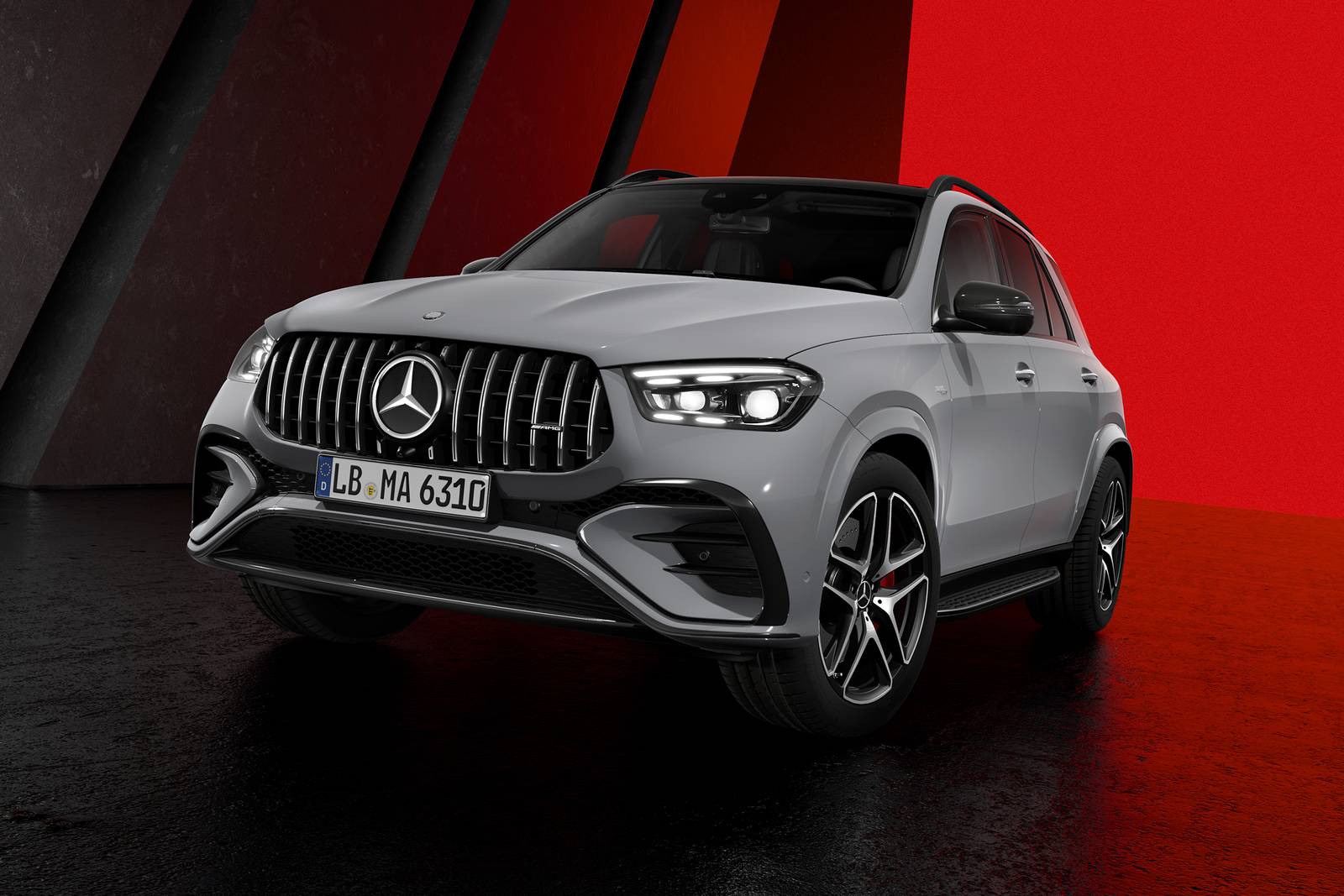
The camera resolution is top-tier, offering crisp and detailed visual feedback even in poor lighting conditions. Obstacle overlays and trajectory lines respond in real time to steering inputs, allowing for intuitive control with minimal room for error.
In curb-side scenarios, this level of precision ensures passengers exit safely and comfortably, even in areas with narrow sidewalks or uneven terrain. The GLE’s advanced camera angles also help protect the vehicle from wheel and bumper damage, a common risk in tight spots.
If you’re looking for a system that combines luxury, technology, and foolproof spatial awareness, the Mercedes-Benz GLE delivers a best-in-class experience for every drop-off scenario.
7. Subaru Outback
The Subaru Outback might be best known for its rugged reliability, but it’s also one of the smartest vehicles when it comes to visibility and control in tight spots.
Its Front & Side View Monitor, paired with Reverse Automatic Braking, makes it uniquely capable during curb-side drop-offs, particularly in unpredictable environments like rural school zones, uneven roadsides, or narrow mountain town streets.
The Outback’s camera system isn’t just a luxury feature—it’s engineered for practical use. The Side View Monitor, activated with a simple button near the steering wheel, displays a real-time view of the passenger-side curb area.
This lets the driver see exactly how close the wheels are to the edge, eliminating the risk of damaging tires or undercarriage parts on high or broken curbs.
The system also offers a front camera view, helpful for maneuvering into angled or complex spaces. While it lacks a full 360-degree bird’s-eye view like some competitors, the separate views are still highly effective and are displayed clearly on the vehicle’s center touchscreen.
For added assistance, steering-responsive guidelines appear when reversing or turning, helping to track where the vehicle is heading.
An especially valuable addition is Reverse Automatic Braking. When backing up, the system can detect stationary objects or sudden movement behind the car and apply the brakes if the driver doesn’t respond in time.

This adds an extra layer of protection when dropping off passengers in busy areas—such as kids darting behind the car or pets in suburban neighborhoods.
In terms of usability, Subaru’s infotainment system is clean and straightforward. The camera feed switches automatically based on speed, gear selection, and directional input, so you don’t have to fumble with menus while navigating a drop-off.
For drivers who face a wide variety of conditions—from urban congestion to rustic roads—the Outback delivers an adaptive camera system that excels in real-world curb-side settings.
8. Hyundai Palisade
The Hyundai Palisade is a three-row SUV packed with comfort, but it also delivers some of the most advanced camera technology available in its price range.
The key features for curb-side drop-offs are the Surround View Monitor (SVM) and the Blind-Spot View Monitor (BVM)—a combination that enhances awareness on both sides of the vehicle with crystal clarity.
The Surround View Monitor offers a full 360-degree top-down perspective by combining inputs from four cameras. This view can be customized to show close-up side angles, especially useful when aligning parallel to a curb.
The ability to switch views ensures that you can monitor the right-side curb in real time, adjusting your position to ensure safe and convenient passenger exits.
One of the Palisade’s most distinctive features is the Blind-Spot View Monitor, which activates a live camera feed in the instrument cluster whenever a turn signal is engaged.
For curb-side drop-offs, this means that when the right turn signal is on—indicating a pull to the curb—the display shows a detailed video of what’s immediately next to the vehicle. This includes small obstacles like curbs, low poles, or street signage that might otherwise be missed.
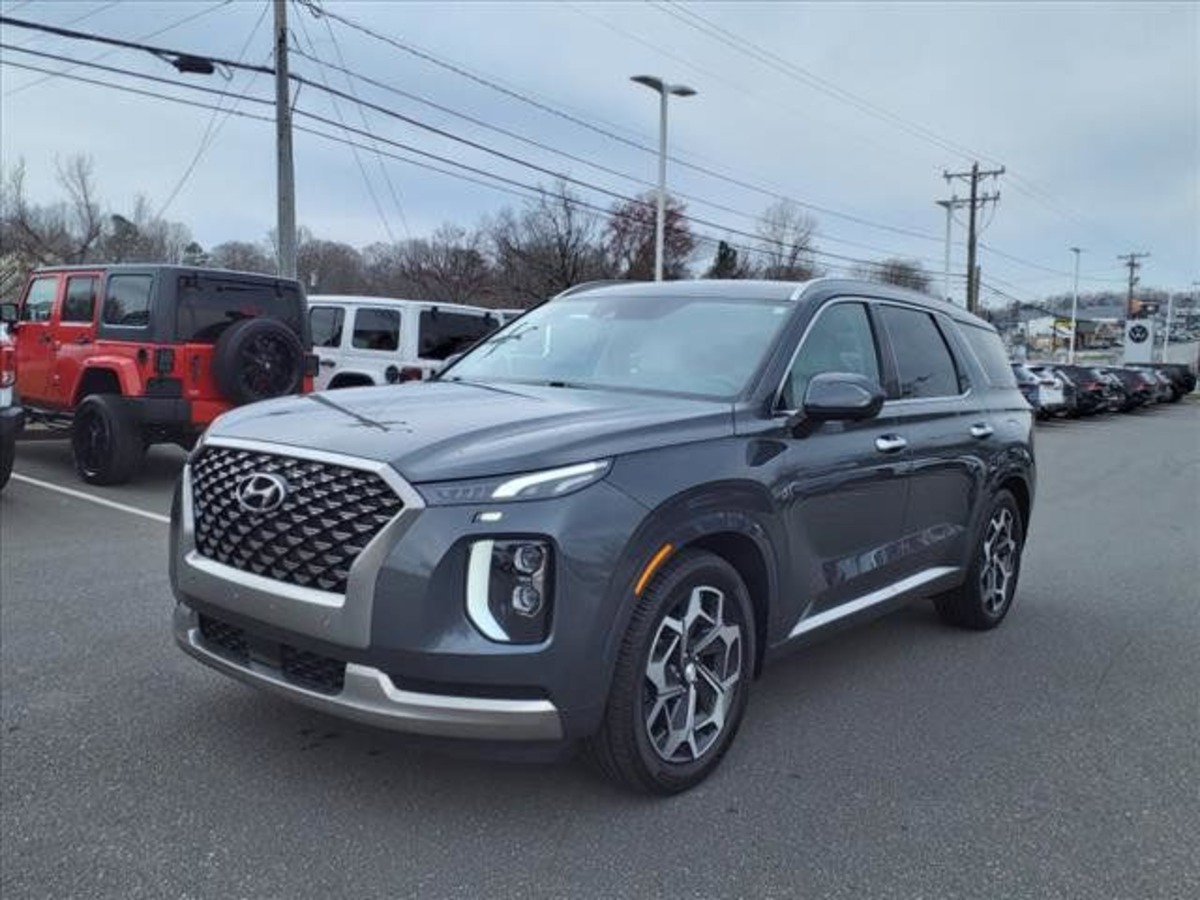
In addition, the system provides dynamic guidelines that move with the steering wheel, giving a predictive path overlay. This helps drivers steer smoothly and accurately into position, especially when maneuvering in tight urban areas or crowded event spaces.
Usability is a major strong point. The large touchscreen display is intuitive, and camera views are accessible either automatically or manually with a dashboard control. The camera resolution is impressive, delivering fine detail in all lighting conditions—day, dusk, or rain.
For families or drivers who make frequent stops in busy areas, the Palisade’s camera systems are a real asset. They reduce risk, improve passenger safety, and eliminate the trial-and-error approach many drivers face when navigating curbs.
Hyundai has raised the bar by integrating high-end features into an affordable package, making the Palisade a go-to choice for high-tech curb-side capability.
9. Mazda CX-90
The Mazda CX-90, Mazda’s flagship three-row SUV, combines upscale design with advanced driver assistance, and its 360° View Monitor is a standout tool when it comes to handling curb-side drop-offs. While Mazda is known for its driver-centric performance, the CX-90 proves the brand also excels at practical safety features like curb-optimized visibility.
The CX-90’s camera system is built on four high-resolution cameras placed at the front grille, rear tailgate, and beneath each side mirror.
Together, they generate a top-down composite view that displays on the SUV’s crisp 12.3-inch center screen. This is split into adjustable zones—allowing users to zoom in on the passenger-side curb or rear tire area with just a tap.
What truly aids in curb-side drop-offs is the system’s ability to automatically adjust views based on driving context. Shift into reverse, and the screen defaults to a wide-angle rear view with a side perspective.
If you’re slowly maneuvering forward at low speeds near a sidewalk or tight urban area, the front and side curb angles activate—ideal for tight parallel parking or navigating into a school drop-off loop.
The system also features dynamic trajectory lines that respond instantly to steering input, giving drivers a real-time projection of where their vehicle will go. This feedback is especially helpful when positioning the vehicle close enough to the curb for passengers to safely exit without opening doors into traffic lanes.
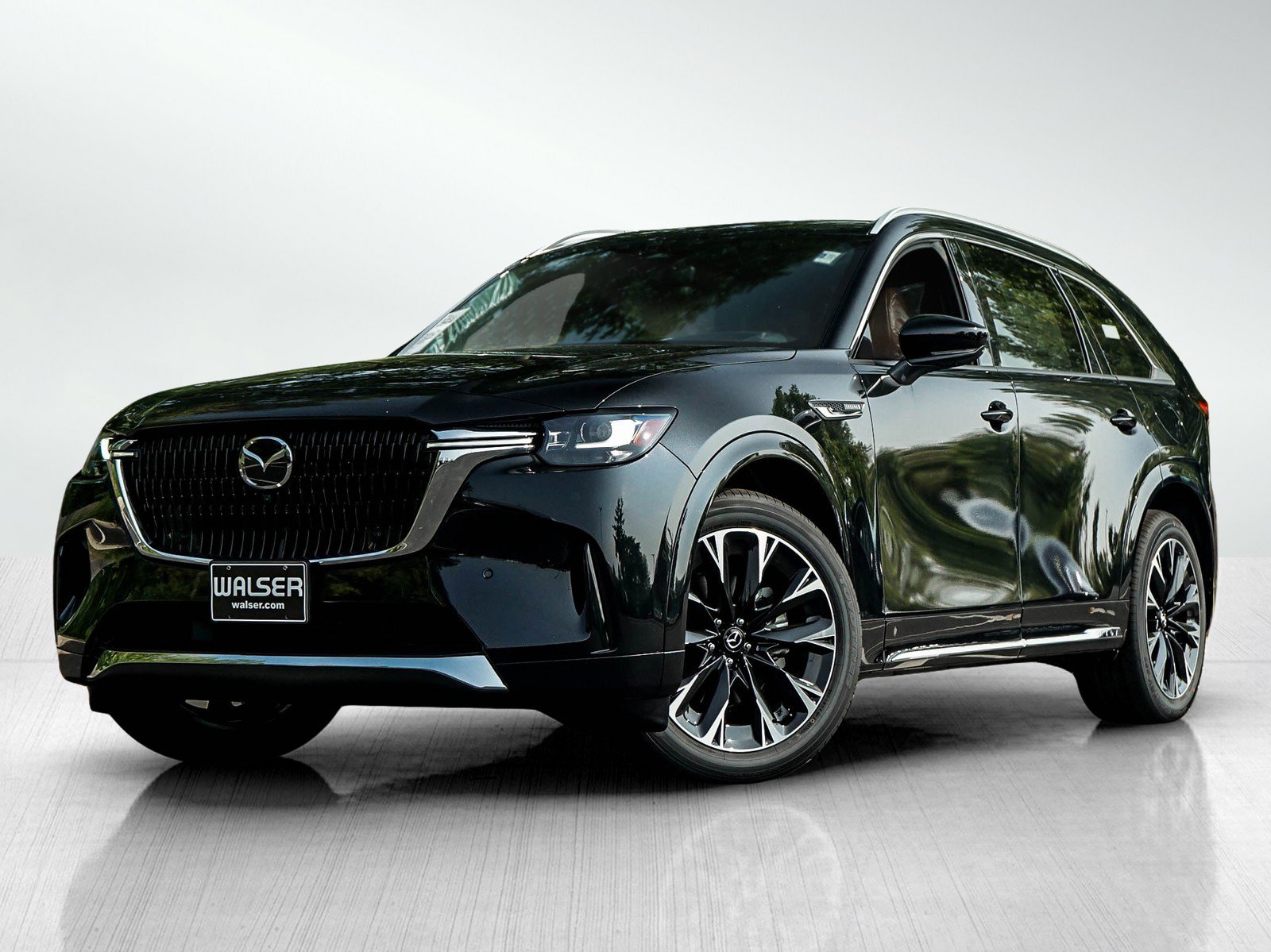
Camera clarity is impressive, with Mazda using enhanced processing to reduce distortion and adjust for different lighting conditions. The passenger-side camera helps visualize the area next to the curb clearly, eliminating guesswork when lining up with sidewalks or painted curbs.
In terms of usability, the interface is streamlined and responsive. A dedicated camera button on the dashboard enables manual activation of any view, even when not in reverse.
The vehicle also integrates Parking Sensors with Smart Brake Support, which supplements the camera with proximity warnings and, if necessary, automatic braking during tight maneuvers.
The Mazda CX-90 doesn’t just deliver luxury and driving enjoyment—it offers smart visual support that makes curb-side tasks easier, safer, and more comfortable. Whether you’re handling daily school drop-offs or tight city parking, its camera system is a reliable assistant you’ll quickly learn to appreciate.
10. Genesis GV80
The Genesis GV80 blends high-end luxury with practical safety innovation, and its camera system is one of the best in the business for curb-side precision.
The Surround View Monitor, paired with Blind-Spot View Monitor (BVM) and Reverse Guidance with Predictive Lines, forms a trio of visual technologies that are especially beneficial when dropping off passengers.
The Surround View Monitor uses four cameras to provide a seamless 360-degree view around the SUV. But what makes it special is its multi-angle selection, including close-up views of the front and side curbs.
With a few taps on the large center touchscreen, the driver can toggle between a curb-focused camera view, top-down perspectives, and a full rear feed with steering-responsive trajectory lines.
The Blind-Spot View Monitor is uniquely integrated into the digital instrument cluster. When you activate a turn signal—say, to move toward the curb—the dashboard displays a live feed of the corresponding blind spot. This makes it extremely easy to spot bikes, poles, curbs, or people that might be obscured by traditional mirrors.
Adding to this is the GV80’s Reverse Guidance System, which overlays dynamic colored lines on the camera feed to show the intended path of the vehicle. This is crucial in narrow, curved, or obstructed curb spaces, where the ability to visualize tire and door clearance can prevent scrapes or unsafe passenger exits.
Camera resolution is top-tier, with high-definition clarity and excellent performance in both daylight and low-visibility conditions.
The interface is responsive and designed with user-friendliness in mind—camera views automatically adapt to gear changes, and manual override is available through a single dashboard button.

Genesis also includes Parking Collision-Avoidance Assist – Rear, which uses radar and sensors in tandem with the camera views to stop the vehicle if an obstacle or person is detected during a reverse maneuver.
Altogether, the GV80’s visual safety suite delivers luxury-grade control that’s not just impressive—it’s genuinely useful for everyday driving. If you need precision, comfort, and safety rolled into one system, few do it better than Genesis.
In today’s world of dense urban environments, crowded school drop-off zones, and increasingly narrow curbside spaces, rearview camera angles are no longer just luxury conveniences—they’re essential safety features.
The ability to clearly see what’s behind and around your vehicle enhances driver confidence, protects pedestrians, and dramatically reduces the risk of property damage. But as this article has shown, not all camera systems are created equal.
The vehicles we’ve explored—ranging from mainstream family haulers like the Honda Odyssey and Subaru Outback to high-end models like the BMW X5 and Mercedes-Benz GLE—demonstrate the breadth of technology available.
Each manufacturer brings a different approach to solving the same problem: helping drivers better navigate the curb-side landscape.
Key camera technologies such as bird’s-eye views, split-screen displays, moving object detection, and right-side curb-specific angles directly improve the curb-side drop-off experience.
For families, this means safer exits for children; for urban commuters, this translates into faster and more accurate stops; for anyone driving in busy areas, it results in fewer blind spots and less anxiety.
Even vehicles without full 360-degree systems can still offer major benefits. Honda’s multi-angle camera or Subaru’s side-view monitor are excellent examples of how focused implementations can be just as helpful as panoramic solutions.
Meanwhile, advanced options like the 3D Remote View in the BMW X5 push boundaries by letting users remotely assess their vehicle’s surroundings—something unimaginable just a few years ago.
Another recurring theme across these vehicles is user control and automation. Whether it’s Toyota’s Perimeter Scan slowly rotating around the car, Ford’s dual-angle split screen, or the Mercedes-Benz’s semi-automated Parking Assist, modern systems allow drivers to either actively manage their view or rely on smart automation.
This flexibility is crucial, especially when time is tight and conditions are variable.
Also important is the integration of safety systems that complement the cameras—like Reverse Automatic Braking or Blind-Spot View Monitors. These systems combine visual awareness with sensor-based action, enhancing safety for both the driver and nearby pedestrians.
As automotive technology continues to evolve, we can expect rearview camera systems to become even smarter and more personalized.
Artificial intelligence, augmented reality overlays, and predictive motion tracking are already being tested in higher-end models and will likely trickle down into mainstream vehicles in the coming years.
In the meantime, drivers looking for safer and smarter curb-side maneuvering have a wide array of excellent choices.
Whether you’re navigating a school zone, a city center, or a crowded shopping plaza, a good rearview camera system isn’t just a nice-to-have—it’s a vital tool. As these 10 vehicles have shown, the right angles make all the difference.
Also Read: 10 Cars With USB Charging in All Three Rows

